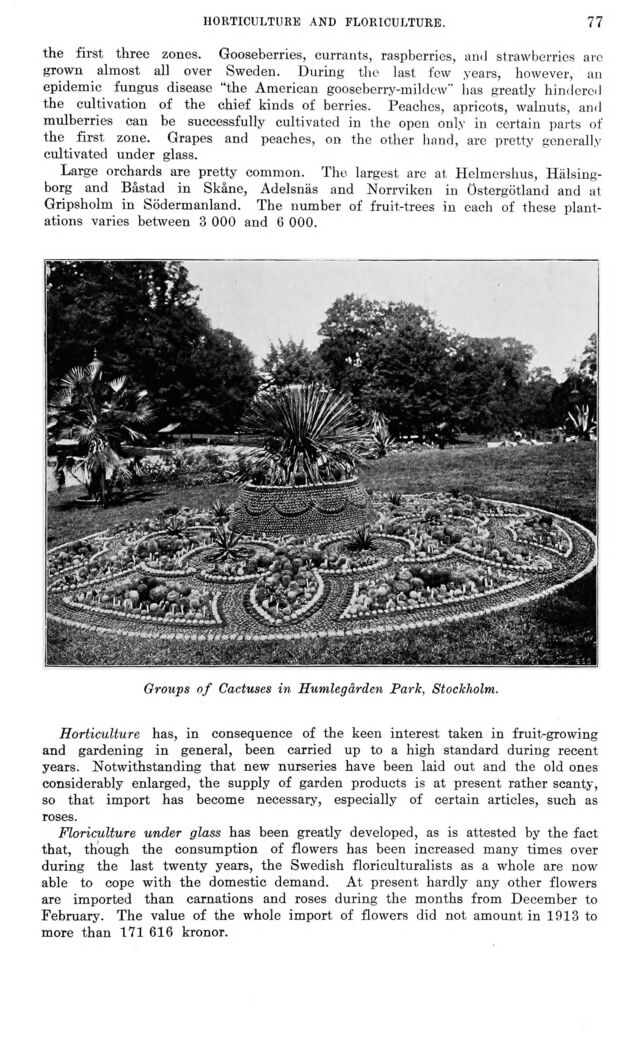
Full resolution (JPEG) - On this page / på denna sida - III. Rural Husbandry. Introd. by H. Juhlin Dannfelt - 1. Agriculture. By H. Juhlin Dannfelt - Horticulture and Floriculture. By G. Lind

<< prev. page << föreg. sida << >> nästa sida >> next page >>
Below is the raw OCR text
from the above scanned image.
Do you see an error? Proofread the page now!
Här nedan syns maskintolkade texten från faksimilbilden ovan.
Ser du något fel? Korrekturläs sidan nu!
This page has never been proofread. / Denna sida har aldrig korrekturlästs.
horticulture and floriculture.
77
the first three zones. Gooseberries, currants, raspberries, and strawberries arc
grown almost all over Sweden. During the last few years, however, an
epidemic fungus disease "the American gooseberry-mildew" has greatly hindered
the cultivation of the chief kinds of berries. Peaches, apricots, walnuts, and
mulberries can be successfully cultivated in the open only in certain parts of
the first zone. Grapes and peaches, on the other hand, arc pretty generally
cultivated under glass.
Large orchards are pretty common. The largest are at Helmershus,
Hälsingborg and Båstad in Skåne, Adelsnäs and Norrviken in Östergötland and at
Gripsholm in Södermanland. The number of fruit-trees in each of these
plantations varies between 3 000 and 6 000.
Groups of Cactuses in Humlegården Park, Stockholm.
Horticulture has, in consequence of the keen interest taken in fruit-growing
and gardening in general, been carried up to a high standard during recent
years. Notwithstanding that new nurseries have been laid out and the old ones
considerably enlarged, the supply of garden products is at present rather scanty,
so that import has become necessary, especially of certain articles, such as
roses.
Floriculture under glass has been greatly developed, as is attested by the fact
that, though the consumption of flowers has been increased many times over
during the last twenty years, the Swedish floriculturalists as a whole are now
able to cope with the domestic demand. At present hardly any other flowers
are imported than carnations and roses during the months from December to
February. The value of the whole import of flowers did not amount in 1913 to
more than 171 616 kronor.
<< prev. page << föreg. sida << >> nästa sida >> next page >>